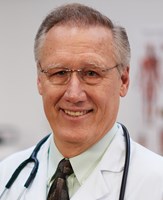Recently, a CHM member wrote:
I’m having a hard time deciding whether to schedule my screening mammogram as two view (2D) or three view (3D). I am 40 years old and had my first mammogram last year as a two view; the results were normal. Other than never giving birth, I have no risk factors for breast cancer. I heard 3D mammograms are much better at detecting breast cancer than 2D mammograms, but also that 3D mammograms expose the patient to more radiation. Looking at the cost factor, the 3D mammogram is about $150 more because, in my area, it is only available at a hospital. Is it worth paying the extra money for the 3D mammogram?
Dr. Jacobson’s response: Age 40 is generally considered early initiation of screening. As you had a normal mammogram (MMG) last year, the best answer probably hinges on your individual risk factors.
Why should mammograms be considered?
According to the American College of Obstetricians and Gynecologists (ACOG), breast cancer is the most commonly diagnosed cancer in women. Breast cancer is the second-leading cause of cancer death in American women, after lung cancer. ACOG points to modeling that concludes that the potential benefit of early, annual cancer screening with mammography outweighs by 60-fold the risk of dying from radiation-induced cancer. Estimates indicate that screening 100,000 women every year with mammography would induce 125 cases of breast cancer and cause 16 deaths, while not screening that same-size group would result in 968 breast cancer deaths.
Shared decision-making
ACOG’s current breast cancer screening guidance focuses on patient autonomy and shared decision-making to help women and their obstetrician-gynecologists (OB/GYN) decide on an appropriate breast cancer screening strategy from among the range of reasonable options within published major guidelines. ACOG recommends that women and their OB/GYNs engage in dialogue that includes discussion of health history, the benefits and harms of screening, and the patient’s related concerns, priorities, values and preferences surrounding screening. This patient-centered, individualized approach is designed to help women feel empowered to fully consider their breast cancer screening options, and take an active and informed role in their healthcare.
Benefits and drawbacks of screening
Evidence indicates that regular screening mammography starting at age 40 reduces breast cancer mortality for average-risk women. Screening, however, also exposes women to such potential harms as callbacks, anxiety, false-positive results, overdiagnosis and overtreatment. Varying judgments about the appropriate balance of benefits and harms have led to differing guidelines about what ages to start and stop having mammograms, and how frequently to recommend screening for average-risk women. These guideline variations create challenges for both patients and providers in choosing or recommending the most appropriate approach to screening.
Screening guidelines for women at average risk
While variations in guidelines exist, ACOG recommendations for screening mammography for women at average risk of developing breast cancer include the following:
- Women should be offered screening mammography starting at age 40. If they bypass screening in their 40s, they should begin screening mammography no later than age 50.
- Screening mammography should take place every one or two years based on an informed, shared decision-making process that includes a discussion of the benefits and harms of annual and biennial screening and incorporates patient values and preferences.
- Screening mammography should continue regularly until at least age 75. Beyond 75, the decision to discontinue screening should be based on a shared decision-making process informed by the woman’s health status and longevity.
2D or 3D mammography
According to breastcancer.org, a recent five-year study involving 67,350 screening MMGs concluded that 3D mammograms—which create a picture using X-rays from several different angles—find more breast cancers and offer fewer false positives when compared to 2D mammograms. A false positive occurs when a mammogram shows a suspicious area that, after further testing, turns out to be normal. Since the increased number of angles in 3D mammogram allows a radiologist to better differentiate between normal, overlapping breast tissue and tumors, 3D mammograms result in approximately 20 percent fewer false positives. For this reason, 3D mammography appears to be emerging as the preferred breast screening technology.




